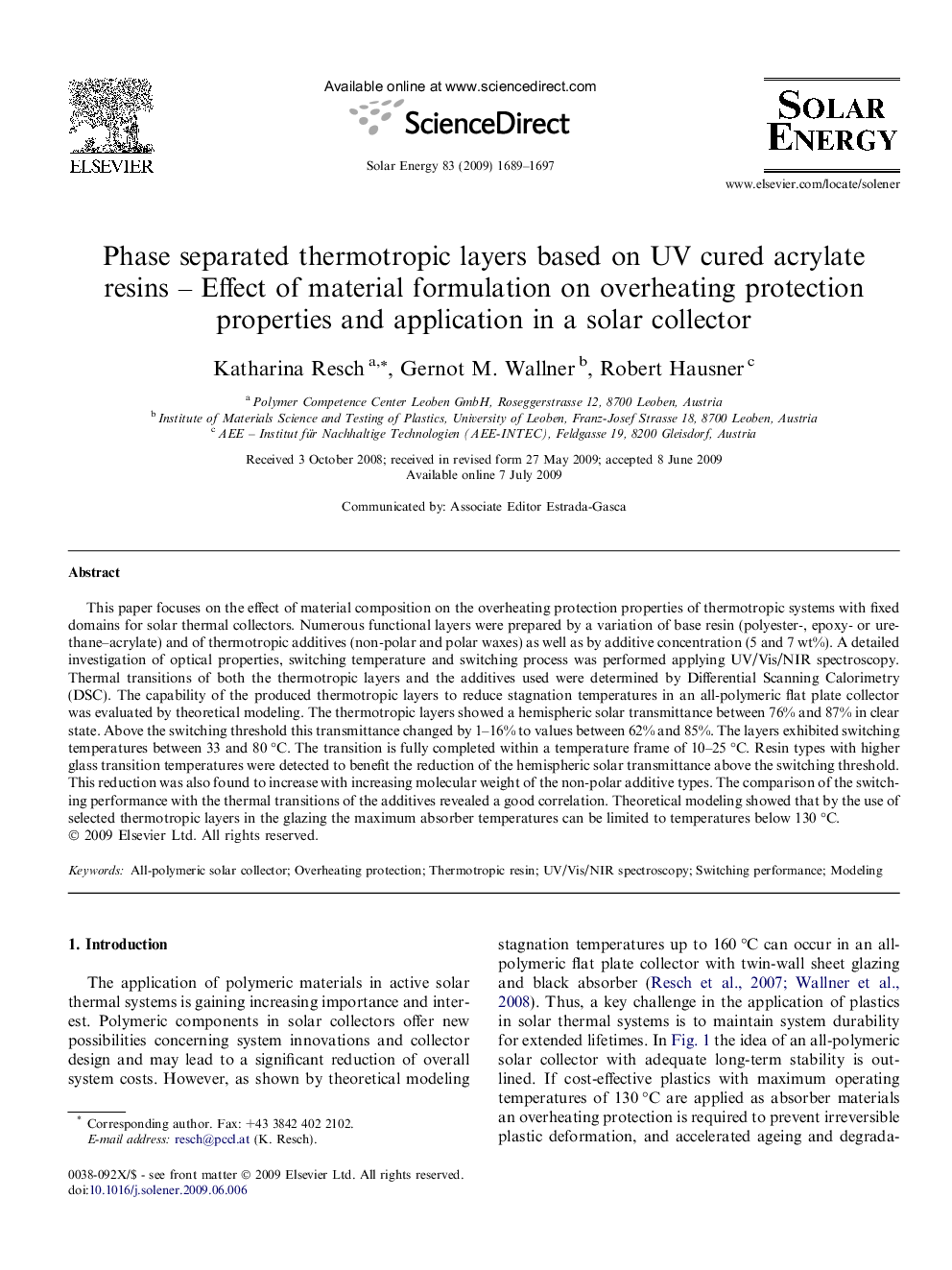| کد مقاله | کد نشریه | سال انتشار | مقاله انگلیسی | نسخه تمام متن |
|---|---|---|---|---|
| 1551621 | 998140 | 2009 | 9 صفحه PDF | دانلود رایگان |

This paper focuses on the effect of material composition on the overheating protection properties of thermotropic systems with fixed domains for solar thermal collectors. Numerous functional layers were prepared by a variation of base resin (polyester-, epoxy- or urethane–acrylate) and of thermotropic additives (non-polar and polar waxes) as well as by additive concentration (5 and 7 wt%). A detailed investigation of optical properties, switching temperature and switching process was performed applying UV/Vis/NIR spectroscopy. Thermal transitions of both the thermotropic layers and the additives used were determined by Differential Scanning Calorimetry (DSC). The capability of the produced thermotropic layers to reduce stagnation temperatures in an all-polymeric flat plate collector was evaluated by theoretical modeling. The thermotropic layers showed a hemispheric solar transmittance between 76% and 87% in clear state. Above the switching threshold this transmittance changed by 1–16% to values between 62% and 85%. The layers exhibited switching temperatures between 33 and 80 °C. The transition is fully completed within a temperature frame of 10–25 °C. Resin types with higher glass transition temperatures were detected to benefit the reduction of the hemispheric solar transmittance above the switching threshold. This reduction was also found to increase with increasing molecular weight of the non-polar additive types. The comparison of the switching performance with the thermal transitions of the additives revealed a good correlation. Theoretical modeling showed that by the use of selected thermotropic layers in the glazing the maximum absorber temperatures can be limited to temperatures below 130 °C.
Journal: Solar Energy - Volume 83, Issue 9, September 2009, Pages 1689–1697